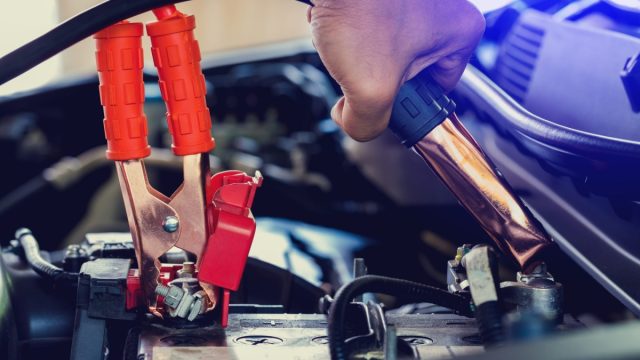The pursuit of renewable energy sources has sparked innovation in energy storage systems, particularly in the realm of hybrid solar setups. One intriguing question that arises is whether car batteries, commonly found in electric and hybrid vehicles, can be repurposed for use in a solar battery bank within a hybrid system. This article delves into the technical aspects, challenges, advantages, and opportunities associated with integrating car batteries into hybrid solar setups.
Understanding Car Batteries
Contents
Car batteries, primarily designed for providing high current bursts to start a vehicle’s engine, are typically lead-acid or lithium-ion based. Lead-acid batteries are the traditional choice due to their affordability and widespread availability, while lithium-ion batteries offer higher energy density and longer lifespan but come with a higher initial cost. Both types of batteries have distinct characteristics and considerations when repurposed for stationary energy storage applications.
Lead-acid batteries, commonly used in conventional automobiles, consist of lead plates submerged in sulfuric acid electrolyte. They are well-suited for applications requiring high current bursts, such as starting a vehicle’s engine. On the other hand, lithium-ion batteries, prevalent in electric and hybrid vehicles, utilize lithium compounds as the cathode material. These batteries offer higher energy density, longer lifespan, and faster charging times compared to lead-acid batteries.
Compatibility Considerations
Integrating car batteries into a solar battery bank requires careful consideration of compatibility factors. While car batteries are capable of storing energy, they are optimized for different usage patterns compared to stationary solar battery banks. Additionally, the voltage and capacity of car batteries may not align with the requirements of a hybrid solar system, necessitating voltage converters, charge controllers, and other adaptations to ensure seamless integration and optimal performance.
When repurposing car batteries for use in a hybrid solar system, compatibility with existing system components becomes crucial. Voltage levels, charging protocols, and discharge rates must be carefully matched to ensure efficient operation and prevent damage to both the batteries and other system components. In some cases, modifications such as the addition of voltage converters or customized charge controllers may be necessary to achieve optimal compatibility and performance.
Challenges and Limitations
One significant challenge in utilizing car batteries for solar storage is their design for frequent charging and discharging cycles, which may not align with the more intermittent nature of solar energy production. This could potentially reduce the lifespan of car batteries when used in a stationary solar application. Furthermore, ensuring compatibility with existing hybrid solar system components such as inverters, solar panels, and charge controllers, as well as addressing safety considerations, are vital aspects to address.
Car batteries, designed for the cyclical demands of vehicular applications, may experience reduced lifespan and performance when subjected to the more irregular charging and discharging patterns associated with solar energy storage. Additionally, the integration of car batteries into a hybrid solar system requires careful consideration of safety aspects, including protection against overcharging, over-discharging, and thermal management to prevent overheating and potential safety hazards.
Advantages and Opportunities
Despite the challenges, repurposing car batteries for a hybrid solar battery bank presents certain advantages. For instance, leveraging the existing infrastructure of car batteries could reduce initial setup costs, especially when considering the growing availability of used electric vehicle batteries. Moreover, recycling used car batteries for solar storage contributes to sustainability efforts by extending their lifespan beyond automotive applications and reducing environmental impact.
The repurposing of car batteries for use in hybrid solar systems not only offers a cost-effective solution for energy storage but also contributes to environmental sustainability. By giving a second life to used car batteries, the environmental impact of disposal is minimized, and valuable resources are conserved. Furthermore, the scalability of hybrid solar systems allows for flexibility in incorporating varying numbers of car batteries, catering to diverse energy storage requirements.
Conclusion and Recommendation
Ultimately, while it is technically feasible to incorporate car batteries into a hybrid solar battery bank, several challenges and limitations must be addressed to ensure optimal performance and safety. Compatibility issues, potential impacts on battery lifespan, and safety considerations underscore the importance of thorough planning and evaluation. As such, individuals interested in implementing a hybrid solar system are encouraged to consult with solar equipment providers who can offer tailored solutions and guidance on designing and installing an efficient and reliable system.
For comprehensive assistance in designing and installing a hybrid solar system optimized for your specific needs, contact a reputable solar equipment provider today. They can provide expert advice and support throughout the process, ensuring a seamless transition to sustainable and efficient energy utilization. By leveraging their expertise and resources, you can embark on your journey towards harnessing the power of the sun while maximizing the potential of repurposed car batteries in your hybrid solar setup.


